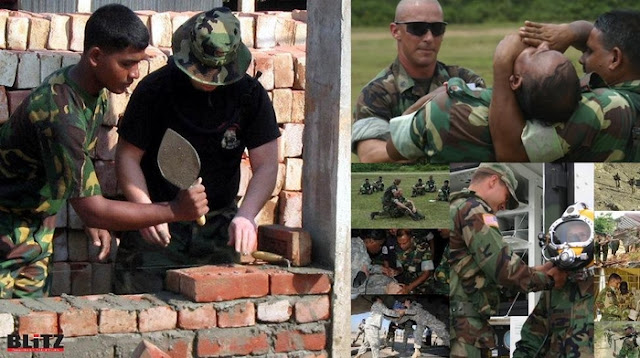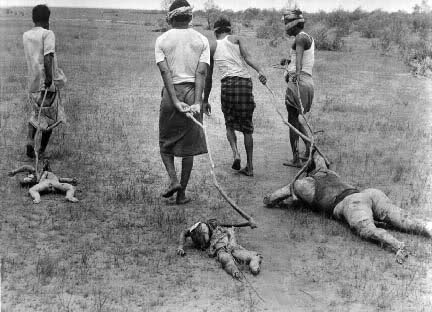Bangladesh will raise 19 new battalions over the next five years to guard its porous borders with India and Myanmar, the chief of the country's paramilitary frontier force said here today.
"We will raise the battalions in phases in next five years alongside creating four regional headquarters as a new tier in the structure of the frontier force and four new sectors under a massive reconstruction plan for Border Guard Bangladesh (BGB)," Major General Rafiqul Islam told PTI in an interview.
The paramilitary force, known as Bangladesh Rifles till last month, is now known as Border Guard Bangladesh.
The border force is undergoing a massive overhaul with its name, laws, uniform and monogram all changed to give it a new look in the aftermath of the 2009 mutiny in which 57 officers were killed.
Islam said the regional headquarters of the force would be set up at northeastern Sarail, southeastern Chittagong, western Jessore and northwestern Naogaon.
The BGB chief said additional manpower would enable the paramilitary frontier force to reduce the existing gaps in its frontier outposts from 10 kilometres to five kilometers while borders guards would also be equipped with motorbikes to patrol the frontlines.
Currently the BGB has 46 battalions but the force was hit by a major crisis after some 6,000 soldiers were accused of mutiny charges. This also necessitated recruitments and restructuring of the frontier force.
BGB officials familiar with the rebuilding process said the frontier force would also construct observation towers to keep a vigil on the borders and a process was underway to procure 17,000 motorbikes for the border guards.
The initiatives to overhaul the force are aimed at freeing it of the stigma of the February, 2009 mutiny when 74 people, including 57 army officers serving the paramilitary force were killed at its Pilkhana headquarters in Dhaka.
Several hundred accused border guards have already been jailed for up to seven years under the relatively lenient BDR Act of the frontier guards.
Around 800 "core culprits" of the mutiny are set to be put on trial on March 5 on charges of involvement in killings, lootings, hostage-taking and torturing army officers and their family members during the rebellion.
The newly-enacted BGB Act has prescribed death penalty for such a mutiny. The new Act has also laid down a provision for qualified soldiers to be given a chance to join the army as commissioned officers with due recruitment procedures.
"Every force of the country will have to abide by their laws to evade any unfortunate event in future... I believe you clearly understand from the core of your heart what damage could be caused if it is violated," Prime Minister Sheikh Hasina said last month as the BDR was formally renamed as BGM at a ceremony at Pilkhana, the scene of the carnage.
"We will raise the battalions in phases in next five years alongside creating four regional headquarters as a new tier in the structure of the frontier force and four new sectors under a massive reconstruction plan for Border Guard Bangladesh (BGB)," Major General Rafiqul Islam told PTI in an interview.
The paramilitary force, known as Bangladesh Rifles till last month, is now known as Border Guard Bangladesh.
The border force is undergoing a massive overhaul with its name, laws, uniform and monogram all changed to give it a new look in the aftermath of the 2009 mutiny in which 57 officers were killed.
Islam said the regional headquarters of the force would be set up at northeastern Sarail, southeastern Chittagong, western Jessore and northwestern Naogaon.
The BGB chief said additional manpower would enable the paramilitary frontier force to reduce the existing gaps in its frontier outposts from 10 kilometres to five kilometers while borders guards would also be equipped with motorbikes to patrol the frontlines.
Currently the BGB has 46 battalions but the force was hit by a major crisis after some 6,000 soldiers were accused of mutiny charges. This also necessitated recruitments and restructuring of the frontier force.
BGB officials familiar with the rebuilding process said the frontier force would also construct observation towers to keep a vigil on the borders and a process was underway to procure 17,000 motorbikes for the border guards.
The initiatives to overhaul the force are aimed at freeing it of the stigma of the February, 2009 mutiny when 74 people, including 57 army officers serving the paramilitary force were killed at its Pilkhana headquarters in Dhaka.
Several hundred accused border guards have already been jailed for up to seven years under the relatively lenient BDR Act of the frontier guards.
Around 800 "core culprits" of the mutiny are set to be put on trial on March 5 on charges of involvement in killings, lootings, hostage-taking and torturing army officers and their family members during the rebellion.
The newly-enacted BGB Act has prescribed death penalty for such a mutiny. The new Act has also laid down a provision for qualified soldiers to be given a chance to join the army as commissioned officers with due recruitment procedures.
"Every force of the country will have to abide by their laws to evade any unfortunate event in future... I believe you clearly understand from the core of your heart what damage could be caused if it is violated," Prime Minister Sheikh Hasina said last month as the BDR was formally renamed as BGM at a ceremony at Pilkhana, the scene of the carnage.














































